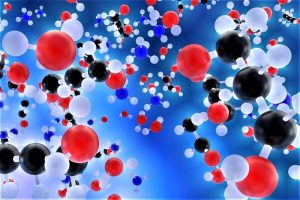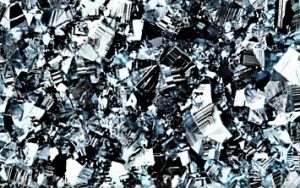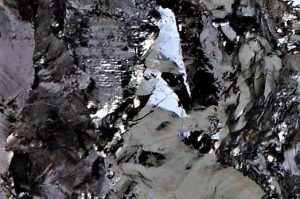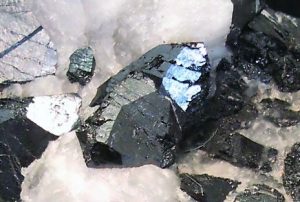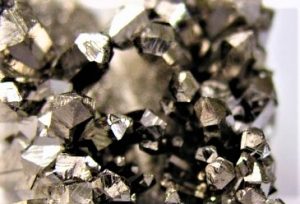Strontium
Strontium is a chemical element that belongs to the periodic table of elements. It is one of the alkaline earth metals that we find in lesser quantity in nature. Approximately the earth's crust contains 0.042% strontium. It is widely used today, mainly in the manufacture of pyrotechnics, railways and bullets. It is a divalent element in all its compounds and is soluble. Through some chemical reactions, its compounds can become soluble in water. These soluble compounds are extremely harmful to health and can produce large water contaminations. When people are exposed to this element, it can accumulate inside the human body.
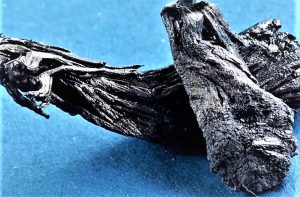
- Symbol: Sr
- Atomic number: 38
- Group: 2
What is strontium?
Strontium is an alkaline earth metal that belongs to the periodic table of the elements, is soft, silvery, shiny, not very malleable, which can oxidize at high speed in the presence of air, acquiring a yellowish tone due to rust.
Strontium characteristics
Its most outstanding characteristics are the following:
- It has an atomic number of 38.
- It has a valence of 2.
- Its oxidation state is +2.
- It has an electronegativity of 1.0.
- Its electronic configuration is [Kr]5s2.
- It has an atomic mass of 87.62 g/mol.
- It has a density of 2.6 g/ml,
- It has a boiling point of 1380° C and a melting point of 768° C.
- Its discoverer was Crawford in 1790.
- Strontium chromate is highly toxic and can cause lung cancer.
- It can cause growth problems in children’s bones.
- The salts of this element can cause skin reactions such as rashes and allergies.
- Being in contact with radioactive strontium can lead to anemia and lack of oxygen.
- It can be found in rocks, soil, water, and air.
- It is water-soluble.
- It is always present in water.
History
It was first identified in the Strontian lead mines in Scotland, where its name comes from, in 1790 by Adair Crawford. During 1798, Klaproth and Hope discovered it independently. The first to isolate strontium was Humphry Davy, in 1808, by electrolysis of the strontium from which the name given to the metal comes.
Who discovered strontium
Strontium was discovered by Adair Crawford, an Irish chemist, in 1790 while studying the mineral known as natural barium carbonate. When he mixed this element with hydrochloric acid, he did not get the results he expected. He then assumed that his sample was contaminated with an unknown mineral, a mineral he called stroncyanite. It was first isolated by Sir Humphry Davy, an English chemist, in 1808 by a process known as electrolysis of a mixture of strontium chloride and mercuric oxide. Today, it is obtained from two of its most common minerals, celestite and stroncyanite, treating these elements with hydrochloric acid generates strontium chloride.
Properties
Among its main properties we can mention that it is an alkaline earth metal very similar to calcium and barium. Freshly cut, it has a silvery appearance, but it quickly changes color and becomes yellowish due to oxide formation. If finely divided, it ignites spontaneously in the air. Its volatile salts can give a beautiful crimson color to flames. It is softer than calcium and decomposes in water with more vigor. It should be kept under kerosene to prevent oxidation of its components. There are three allotropic forms of the metal, with transition points ranging between 235 and 540° C.
What is strontium for?
It has a lot of important uses. Its strontium-82 isotope is used for visualizing cardiac images through positron emission tomography, a procedure performed in hospitals as a means of diagnosis. It is also used to produce ferrite magnets and to refine zinc. Its salts, which cause vivid crimson colors in flames, are mainly used in pyrotechnics and in the production of flares. Strontium titanite has an extremely high refractive index and optical dispersion greater than that of a diamond. It has been used as a precious stone, although it is very soft.
Where it is found?
It is found mainly as celestite, also called celestine and strontianite. The metal can also be prepared by electrolysis of fused chloride mixed with potassium chloride. It can also be done by reducing strontium oxide with aluminum in a vacuum at a temperature at which strontium is distilled. It can also be found in a variety of cereals, vegetables and dairy products.
How to cite this article?
Briceño V., Gabriela. (2019). Strontium. Recovered on 23 February, 2024, de Euston96: https://www.euston96.com/en/strontium/




